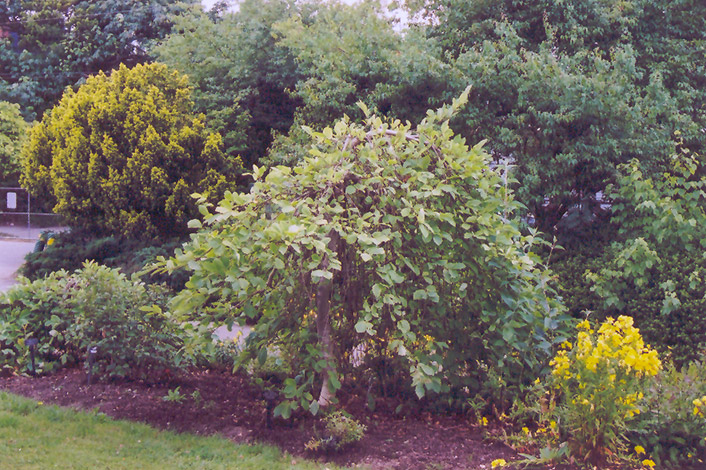Weeping Vernal Witchhazel
Hamamelis vernalis 'Pendula'
Height: 5 feet
Spread: 6 feet
Sunlight:
![]()
![]()
Hardiness Zone: 5
Other Names: Witch Hazel
Description:
A choice but hard to find garden accent plant; strongly weeping form is grafted on a standard to give it height; features fragrant orange-red flowers along the branches in early spring and good fall color; best used as a solitary accent for its form value
Ornamental Features
Weeping Vernal Witchhazel has fragrant orange strap-like flowers with red calyces along the branches from late winter to early spring before the leaves. It has green deciduous foliage which emerges burgundy in spring. The serrated oval leaves turn an outstanding yellow in the fall.
Landscape Attributes
Weeping Vernal Witchhazel is a deciduous tree with a strong central leader and a rounded form and gracefully weeping branches. Its average texture blends into the landscape, but can be balanced by one or two finer or coarser trees or shrubs for an effective composition.
This tree will require occasional maintenance and upkeep, and should only be pruned after flowering to avoid removing any of the current season's flowers. Deer don't particularly care for this plant and will usually leave it alone in favor of tastier treats. It has no significant negative characteristics.
Weeping Vernal Witchhazel is recommended for the following landscape applications;
- Accent
- General Garden Use
Planting & Growing
Weeping Vernal Witchhazel will grow to be about 5 feet tall at maturity, with a spread of 6 feet. It tends to be a little leggy, with a typical clearance of 2 feet from the ground, and is suitable for planting under power lines. It grows at a slow rate, and under ideal conditions can be expected to live for approximately 30 years.
This tree does best in full sun to partial shade. It is quite adaptable, prefering to grow in average to wet conditions, and will even tolerate some standing water. It is not particular as to soil type or pH. It is somewhat tolerant of urban pollution. This is a selection of a native North American species.

